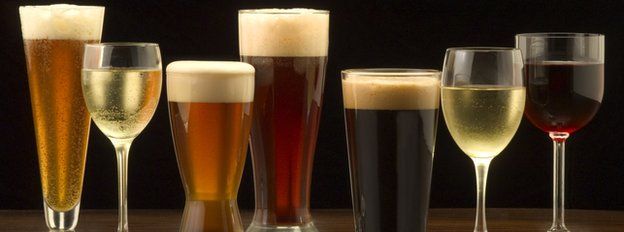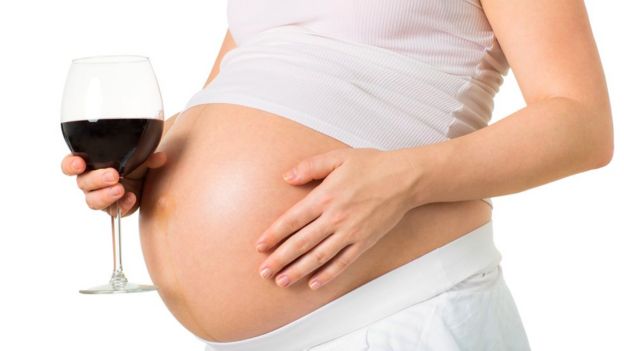New alcohol guidelines: What you need to know
 Thinkstock
Thinkstock
Men and women should drink no more than 14 units of alcohol a week - the equivalent of six pints of average strength beer or seven glasses of wine - in order to keep their health risks low, new guidelines have recommended.
The new Department of Health limits - which come into effect on Friday - replace the previous ones on drinking, which were set out 21 years ago.
Here is a breakdown of what you need to know:
Why now?
The government previously said it had heard "sufficient concerns" from experts about what was known about alcohol and its health risks.
The previous guidelines came out in 1995 and the links between alcohol and cancer and heart disease were not as well understood then as they are now.
It is now known that the risks from alcohol start from any level of regular drinking and rise with the amount being consumed. The new guidelines have been set at a level to keep the risk of mortality from cancers or other diseases "low".
Work on the new guidelines has been under way since 2013.
So what's changed?
 Thinkstock
Thinkstock
The new changes affect men more than women.
Previously, women were advised to drink no more than 2-3 units a day and men no more than 3-4. This technically meant men could consume around 28 units a week, although the Royal College of Physicians (RCP) recommended no more than 21 units should be drunk over seven days.
The old guidance said that by sticking within recommended limits, there was "only a low risk of causing harm in most circumstances".
However, the new rules now state that both men and women should drink no more than 14 units over the course of three days or more. This is the equivalent of a bottle and a half of wine over the course of a week.
The rules also say that it's best not to "save up units" and drink them all in one go and to make sure you have alcohol-free days.
I thought a small amount of alcohol was good for you?
 Thinkstock
Thinkstock
The new recommendations appear to be moving away from this long-held belief.
The review found that the benefits of alcohol for heart health only apply for women aged 55 and over - and even then it's in very small amounts, around five units a week.
The guidelines say: "There is no justification for recommending drinking on health grounds - nor for starting drinking for health reasons."
It also says that evidence in support for drinking alcohol in small amounts to maintain good health was "weaker than it was at the time of 1995".
What about drinking while pregnant?
 Thinkstock
Thinkstock
It's an issue which has caused great debate.
But the new guidelines for pregnant women have now been updated in England, Wales and Northern Ireland to be clear that no level of alcohol is safe to drink in pregnancy.
Previously it was recommended that for women who had opted to drink, consuming no more than one or two units of alcohol - equivalent to one or two small glasses of wine - would "minimise the risk to your baby".
The new guidance says that for women who do drink that amount the risk to their baby is likely to be low, but "nevertheless, we cannot rule out the risks altogether".
Is there a safe drinking level?
No. The new recommendations are at pains to point out that these guidelines are not for "safe" drinking, but rather just at minimising risk of illness.
All alcohol consumption carries some risk, the guidance says.
"The vast majority of the population can reduce health risks further if they reduce drinking below the guideline levels, or do not drink at all," the guidance says.
Drinking above the new recommended 14 units a week is the point at which a person's risk of an early death increases by 1% - the equivalent amount of risk as driving a car.
What's the reaction?
Prof Matt Field, who is a lecturer in addiction at the University of Liverpool, said one of the most important changes with the recommendations is that there is no "safe" level of alcohol consumption.
"Any amount of drinking is associated with increased risk of a number of diseases; the often-reported protective effects will not apply to the majority of people and where they do apply, they refer to very low levels of drinking. So, any amount of alcohol consumption carries some risk," he said.
"It is also important to emphasise why this advice is being issued. This is not about telling people what to do. Instead, people have a right to accurate information about alcohol and its health risks so that they can make informed decisions about their drinking behaviour."
Dr Niamh Fitzgerald, who is a lecturer in alcohol studies at the University of Stirling, said: "The purpose of these new guidelines is to provide the public with the latest accurate information on how they can reduce health risks from alcohol, if they choose to drink.
"Most people are aware of the links between smoking and cancer, but far fewer are aware of evidence linking alcohol consumption with an increased risk of future health problems, in particular cancers of the mouth, intestines and breast cancer in women."
Chief Medical Officer for England, Dame Sally Davies, said: "I want pregnant women to be very clear that they should avoid alcohol as a precaution. Although the risk of harm to the baby is low if they have drunk small amounts of alcohol before becoming aware of the pregnancy, there is no 'safe' level of alcohol to drink when you are pregnant."





